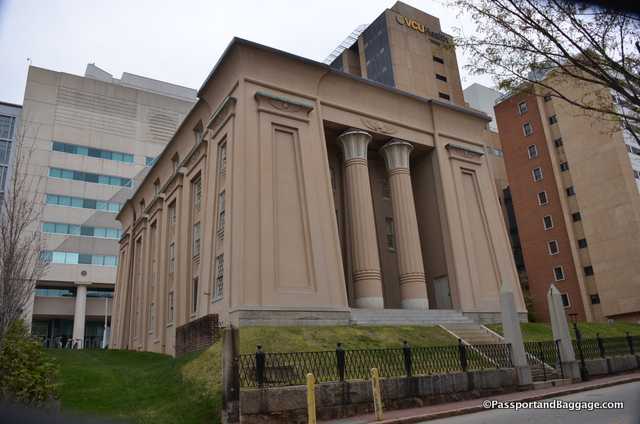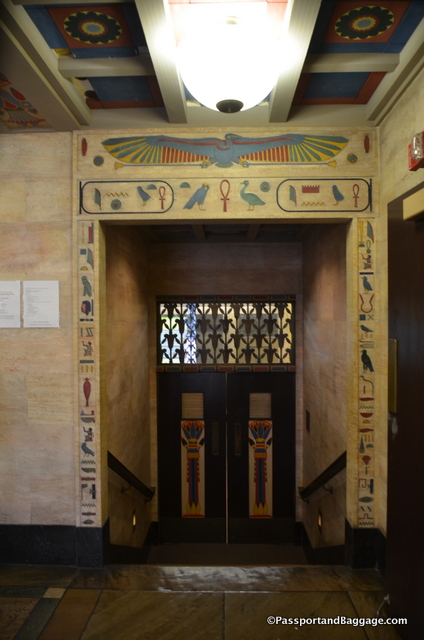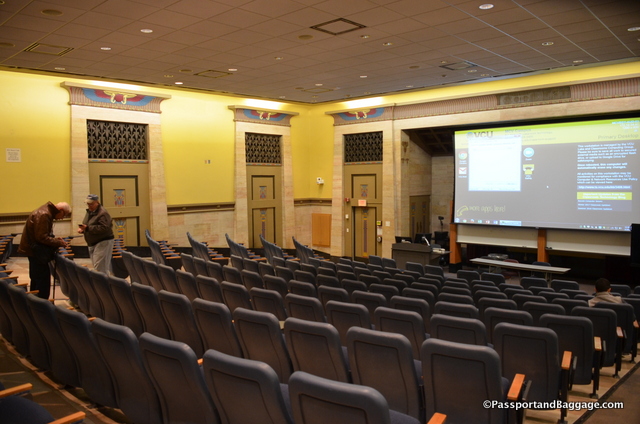Monument Church 1224 East Broad Street
The Egyptian Building 1223 East Marshall Street
March 2017
Egyptian revival is an architectural style that uses the motifs and imagery of ancient Egypt. It is attributed generally to the public awareness of ancient Egyptian monuments generated by Napoleon’s conquest of Egypt and Admiral Nelson’s defeat of Napoleon at the Battle of the Nile in 1798.
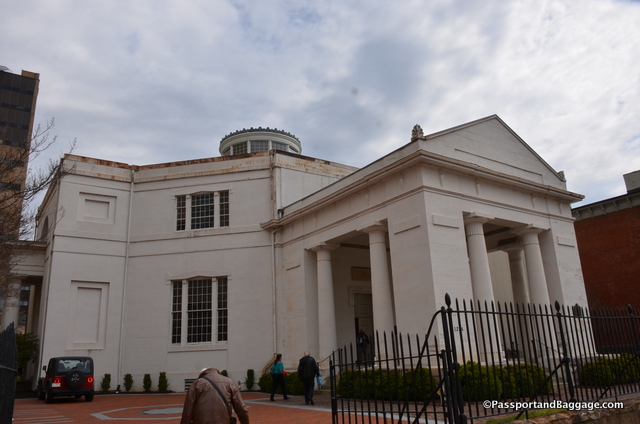 This revival began in the first building of today’s VSA tour the Monumental Church.
This revival began in the first building of today’s VSA tour the Monumental Church.
Tragedy at a phenomenal scale built this church and it is preserved and restored thankfully by Historic Richmond.
On December 26, 1811 a chandelier collided with the scenery of the theater that stood on this site. The result was the death of 72 men, women and children, both white and black. This was one of the worst urban disasters that had hit the new America. Of the 72 who died in the fire 54 were women and 18 were men. Among the notable victims were Virginia’s sitting governor, George William Smith, and former senator Abraham B. Venable. Also killed were Benjamin Botts, of Dumfries, and his wife; Botts had made a name for himself as a member of the defense in Aaron Burr’s 1807 trial for treason.
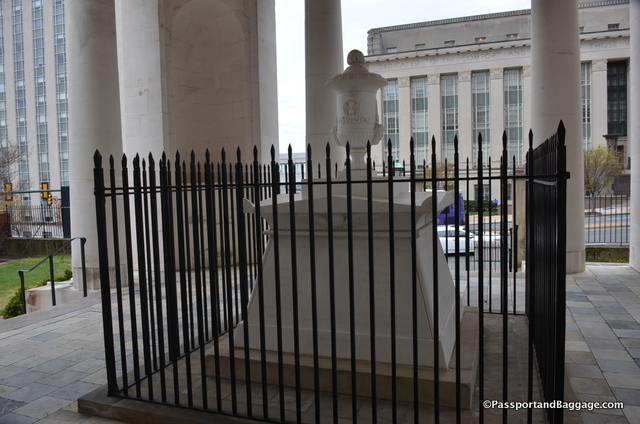
On the top of the memorial pedestal there is a winged disk which represents the Egyptian diety Horus.
Due to the fire, the city came together to build a memorial befitting the tragedy. The result was Monumental Church. Robert Mills was awarded the contract of designing the building, after beating his teacher Benjamin Henry Latrobe out of the award.
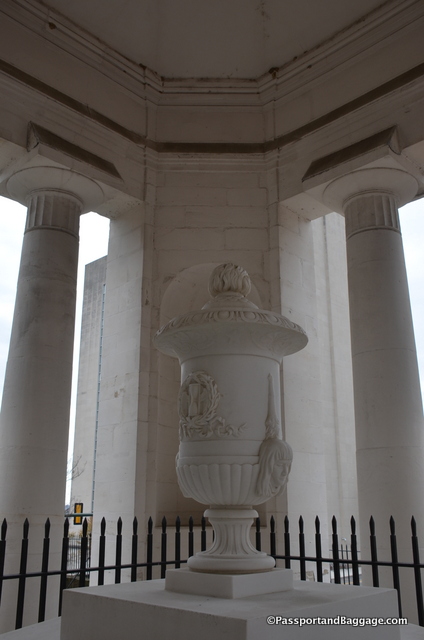
The marble urn is adorned with funerary symbols including drapery, stars and a wreath with flying ribbons. The faces of shrouded women also appear, which can be traced back to a 1728 book of architecture that Mills likely consulted.
Mills used this opportunity to practice his classical design elements, which can be found throughout the interior of the church. Along with his classical elements he also used a handful of Egyptian motifs.
The victims of the fire were entombed in the ground and the building was built around them. You will find the names of all the dead in the memorial in the portico of the building.
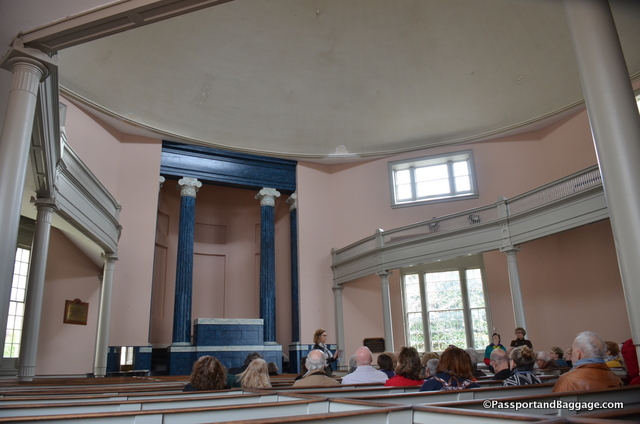
A considerable amount of architectural archeology was done to determine that the columns were in fact, this blue, and faux painted to resemble marble.

The capitals in the church contain more symbols of mourning. There are upside-down torches symbolizing life snuffed out, and stars representing heaven also drapery referencing a burial shroud.
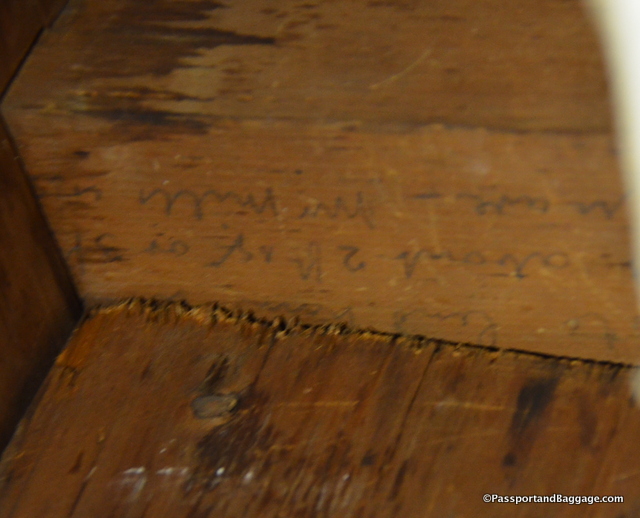
Found, under the stairs, in the most recent renovation were notes with measurements and a notation to the architect “Mr Mills”.
The church has gone through many iterations, including being turned into a Victorian Era church. Today it has been brought back to its original state, thanks to Historic Richmond, although it still has a ways to go. It is not ready for adaptive re-use since the pews are original and should be preserved, making it difficult to find a proper venue, although they are still open to ideas.
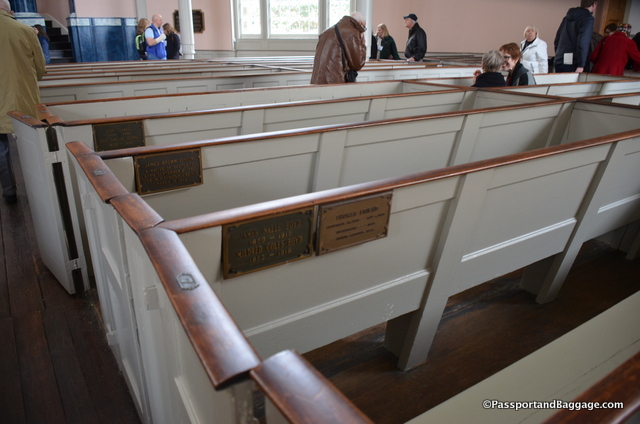
The original pews would have been approximately 18″ higher allowing privacy, they were cut down in the Victorian age. So many famous people have sat in them, including Edgar Allen Poe, Lafayette, and others, making them of historical importance and must remain as part of the structure.
Just around the corner is the “Egyptian Building”.
The Egyptian Building is considered by architectural scholars to be one of the finest surviving Egyptian Revival-style buildings in the nation.
Designed by noted Greek Revival architect Thomas S. Stewart of Philadelphia, the Egyptian Building is one of the finest examples of the rare “Egyptian Revival” style. The building was the first permanent home of the Medical Department of Hampden-Sydney College, which later became the Medical College of Virginia. The Egyptian Building has been in continuous use since its construction in 1845 and remains the oldest medical college building in the South.
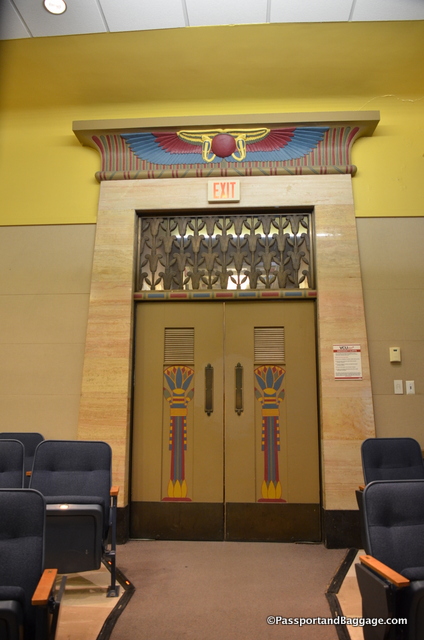
Throughout the building you will find the winged disk which represents Horus. This symbol is also found in the Monumental Church.
The Egyptian Building was designated a National Historic Landmark on November 11, 1971.
